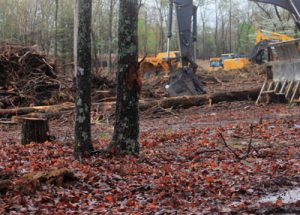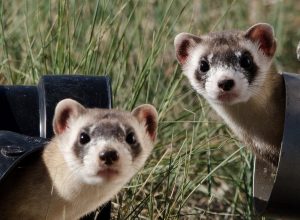Overpopulation and Habitat Encroachment
- NPG
- July 24, 2018
- NPG Commentary
- 0 Comments
Overpopulation and Habitat Encroachment
A Growing Crisis That Must Be Brought Into Balance
 From Earth’s earliest times, humans and wildlife have been in conflict.
From Earth’s earliest times, humans and wildlife have been in conflict.
One of the greatest aspects of their ongoing struggle has been over who gets to live where and how to divide limited resources. To date, humans are winning hands down when it comes to these two important issues. And many forms of wildlife – which are already paying a huge price in the destruction and degradation of their unique habitats – are threatened with paying the ultimate price – full extinction.
In a stark overview of this serious subject last year, Arianna Pittman, author of How Habitat Loss is Causing Human Wildlife Conflict Around the World, wrote in OneGreenPlanet.org :
“Animal habitats are disappearing at alarming rates, making habitat loss the biggest threat to animals’ existence. Deforestation and degradation from logging, animal agriculture, and the palm oil industry have leveled massive amounts of rainforest in South America, forcing animals into ever-shrinking habitats and destroying villages. As the global human population grows, forests and grasslands around the world are cleared to build roads, housing, and shopping centers. Even rural areas are impacted as small towns and villages encroach on land that was once inhabited by wildlife.
As two worlds continue to collide, the sharing of habitats creates a dangerous situation for animals as well as humans. Animals viewed as a nuisance or threat are placed in danger of being trapped or killed, threatening the existence of many species that are already vulnerable as a result of poaching and the illegal wildlife trade. Human lives are also placed at risk when they encounter elephants, tigers, bears, or other large species that feel threatened and attack in an effort to protect their territory or their young. It’s an issue that’s present around the world, and with massive human population growth placing further strain on limited land resources, it’s a problem that will only continue to get worse.”
The enormity of threats to wildlife across the entire planet may be hard for many to wrap their minds around, however the statistics for the U.S. alone should be alarming to everyone.
 In May 2018, Bart Pfankuch, of S.D. NewsWatch in South Dakota highlighted the fact that; “Roughly every decade, in order to continue to qualify for federal wildlife protection dollars, states are required to file a ‘wildlife action plan’ with the U.S. Fish & Wildlife Department. The plans give a detailed listing of threatened or endangered species, the threats against them, efforts to protect them, and a wish-list of actions that would stabilize populations. In all, those reports identified nearly 12,000 species in need of conservation action across the country. Of all species of wildlife in the U.S., a third are considered vulnerable and a fifth are imperiled or at high risk of extinction, according to the National Wildlife Federation. In early May, federal wildlife officials announced that the red wolf population in America is down to only 40 animals in the wild and could go extinct in eight years.”
In May 2018, Bart Pfankuch, of S.D. NewsWatch in South Dakota highlighted the fact that; “Roughly every decade, in order to continue to qualify for federal wildlife protection dollars, states are required to file a ‘wildlife action plan’ with the U.S. Fish & Wildlife Department. The plans give a detailed listing of threatened or endangered species, the threats against them, efforts to protect them, and a wish-list of actions that would stabilize populations. In all, those reports identified nearly 12,000 species in need of conservation action across the country. Of all species of wildlife in the U.S., a third are considered vulnerable and a fifth are imperiled or at high risk of extinction, according to the National Wildlife Federation. In early May, federal wildlife officials announced that the red wolf population in America is down to only 40 animals in the wild and could go extinct in eight years.”
And while most Americans would rarely think of South Dakota – one of our nation’s least populated states – as waging an ongoing war related to human-wildlife interaction, Pfankuch writes:
“We’re in peril and going downhill with the amount of habitat we’re losing in South Dakota, said Chris Hesla, director of the South Dakota Wildlife Federation. Unless it has a conservation easement, there’s almost no undisturbed land left in the country.
South Dakota loses its habitat – with open prairie being the most critical to species protection – in the same ways as other states, said Eileen Dowd Stukel, wildlife diversity coordinator with the South Dakota GFP. Animal habitat is destroyed by development of homes, conversion of native lands into agricultural uses and dividing of land for wind towers or other industries, Dowd Stukel said. It’s the typical things that are happening everywhere,” she said. “Just for expanding populations, every time you cut up those native habitats, you’re further stressing those species.
One example is the draining of small ponds or ditches to make those lands suitable for farming and ranching. The water-filled depressions that appear each spring and fall in farm fields or ranch lands across the state form critical stopping points for migrating birds and water sources for local species.
Hesla pointed out that even people who support growth, industry or agricultural expansion should support habitat protection. If a species moves from a concern to threatened to endangered, its habitat will then be subject to vast federal and state protections that may cost businesses money or require them to shut down completely.”
While there are hundreds of thousands of stories the world over about human encroachment and abuse of wildlife habitat, there are also thousands of recommendations as to how we solve this growing problem. Robin McKie, Science Editor of the UK’s The Observer, recently wrote an essay titled, Should We Give Up Half of the Earth to Wildlife? In it, she put forth this worrisome fact: “According to one recent report, the number of wild animals on Earth has halved in the past 40 years, as humans kill for food in unsustainable numbers and pollute or destroy habitats, and worse probably lies ahead.”
It’s quite clear that the challenge to find a balance between humans and wildlife will carry forward for decades to come. That is why NPG works so hard to highlight the potential horrors of leaving this issue to languish as we continue to expand our NPG Educational Programs. It is vital that we get this and other key environmental issues that are being greatly aggravated by population size and growth into America’s classrooms. Let’s hope that our children, grandchildren and future generations to come do a better job of tackling and resolving the human-wildlife conflict to the benefit of both sides.
Your gift helps publish and distribute materials like this.
NPG is recognized as a 501(c)(3) non-profit organization, and all contributions are tax-deductible to the extent the law allows.
- EARTH DAY 2024 - April 15, 2024
- We owe it to future generations… - April 13, 2024
- New NPG Forum Paper Explores the Role of Migrant Labor in US Agriculture - April 11, 2024
